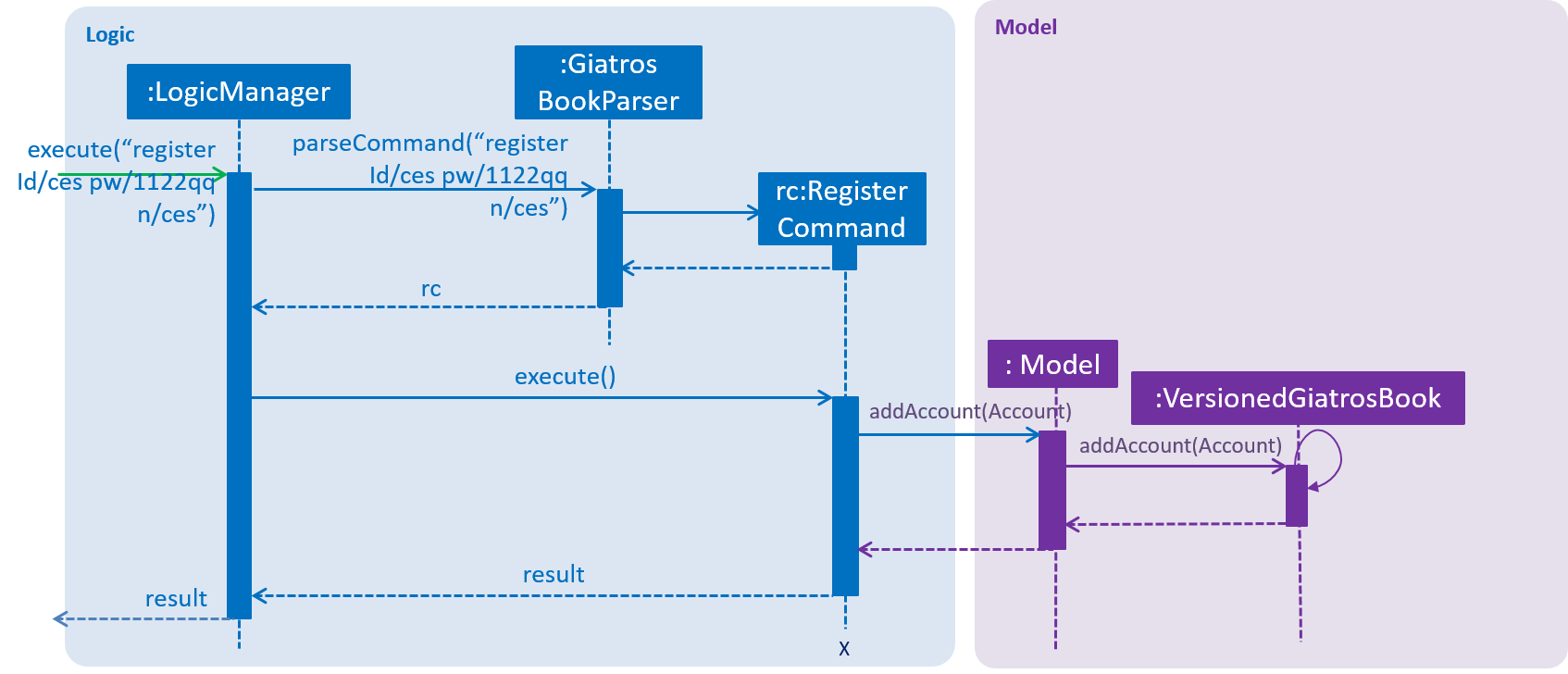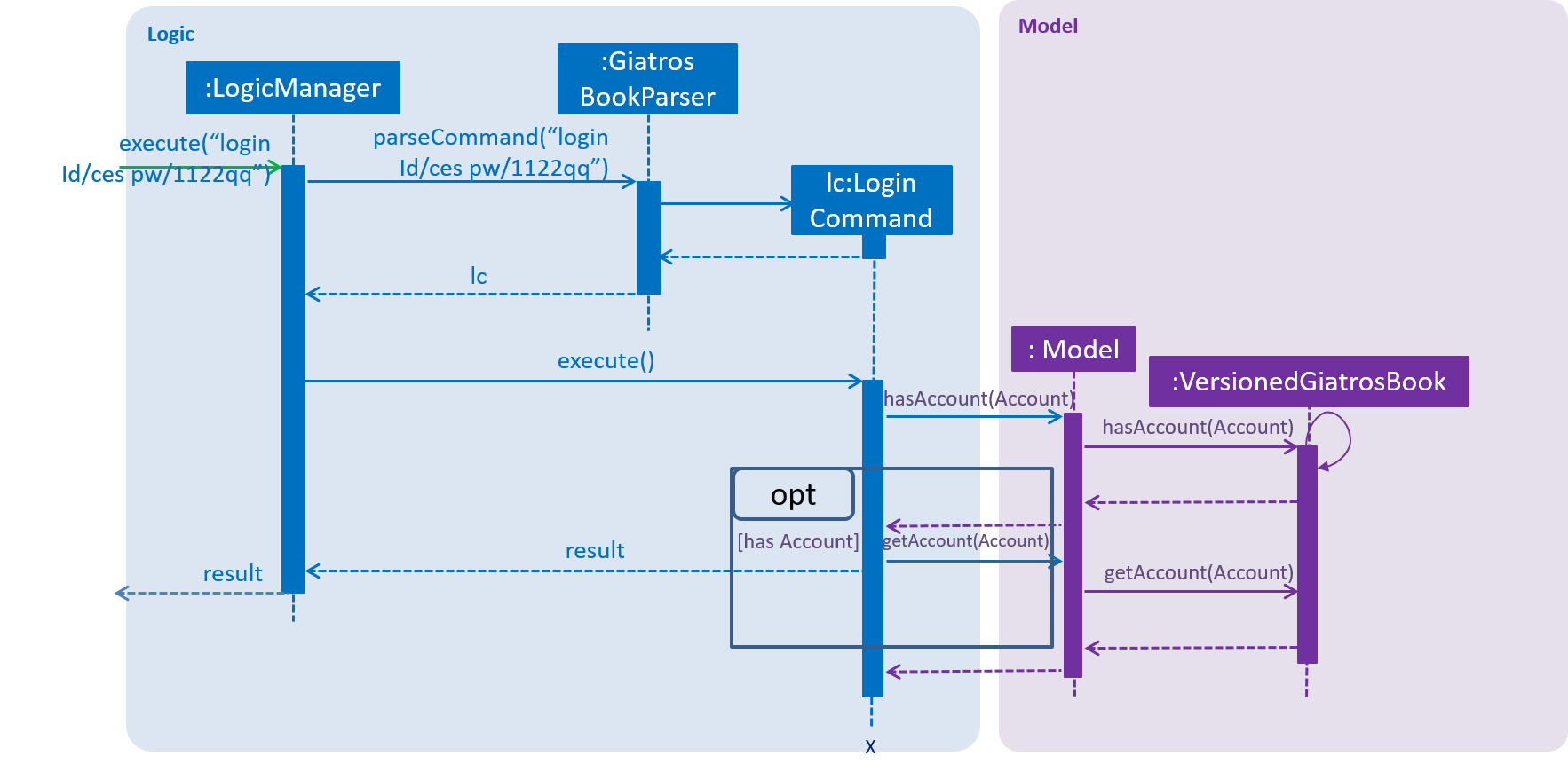Overview
Hi! I am Chua Eng Soon, a Computer Science undergraduate in National University of Singapore. Giatros is my first software engineering project under CS2103.
An introduction is as such:
Giatros is a desktop patient record application that allows staff to keep track of patient data in a hospital. Written in Java, the user interacts with it using a CLI, and it has a GUI created with JavaFX. With the authentication and user management components, these restrict people without proper credentials from viewing or editing information.
Summary of contributions
-
Major enhancement: Added the User Authentication feature
-
What it does: Prevents user without proper credentials from executing role-restricted command and viewing of sensitive information.
-
Justification: This feature provides data protection for sensitive information from user without proper credential.
-
Highlights: 'Login', 'Logout' and 'Register' commands are available to faciliate the User Authentication feature.
-
-
Minor enhancement:
-
Change the ab4 logo to Giatros
-
Change the UI to show the username of the current user at the top right corner of the gui.
-
Added sample data for accounts and patients
-
-
Code contributed: [Functional code] [Test code] {give links to collated code files}
-
Other contributions:
-
Project management:
-
Managed releases
v1.0-v1.4(5 releases) on GitHub
-
-
Documentation:
-
Updated the Product Website
-
Updated the user guide
-
Updated the developed guide
-
Updated the portfolio page
-
-
Tools:
-
Created an organization repository for the team on Github
-
Integrated a Github plugin (TravisCI) to the team repo
-
Integrated a Github plugin (Appveyor) to the team repo
-
Integrated a Github plugin (Coveralls) to the team repo
-
-
Contributions to the User Guide
Given below are sections I contributed to the User Guide. They showcase my ability to write documentation targeting end-users. |
User Authentication Features
When the application is first opened, it will be in Guest mode and no command can be executed except the login command.
Logging in to the application : login
Allows a guest to login and start using the application.
Format: login id/USERNAME pw/PASSWORD
A dummy staff account with sample data is available by default. Username: STAFF and Password: 1122qq
|
Logging out of the application : logout
Allows the user to logout when done with the session.
Format: logout
| You can only logout when you have been logged in. |
Registering a new staff to use the application : register
Allows the manager to create new staff account using which new staff can log into the application.
Format: register id/USERNAME pw/PASSWORD n/NAME
A dummy manager account is available by default. Username: MANAGER and Password: 1122qq
|
Contributions to the Developer Guide
Given below are sections I contributed to the Developer Guide. They showcase my ability to write technical documentation and the technical depth of my contributions to the project. |
User authentication feature
Current Implementation
The user account mechanism is facilitated by GiatrosBook. Additionally, it implements the following operations:
-
GiatrosBook#addAccount(Account)— Saves the new account.
These operations are exposed in the Model interface as Model#getAccount(Account). The following commands will
invoke the aforementioned operations:
-
Command#LoginCommand()— InvokesModel#getAccount(Account). -
Command#RegisterCommand()— InvokesModel#addAccount(Account).
Given below are usage scenarios and how each of the command and its respective operations behave at each
step which involves two components, Logic which is responsible for parsing the user input and Model which is
responsible for manipulating the list, if necessary. Both components are extended by LogicManager and
ModelManager respectively.
The following sequence diagram shows how the register command works:

Figure 4.2.1.1: Sequence diagram to illustrate component interactions for the register command
|
Step 1. The user executes register id/ces pw/1122qq n/Chua Eng Soon command to create a new user account.
Step 2. LogicManager invokes the GiatrosBookParser#parseCommand() method which takes in the user input
as arguments.
Step 3. When the command is parsed, the Command#RegisterCommand() will be created which is returned to the
LogicManager.
Step 4. LogicManager invokes the execute() method of the Command#RegisterCommand(), rc which is instantiated in
Step 3. The Model component will be involved as the Command#RegisterCommand() invokes a request to add the account
into the storage by calling Model#addAccount(Account).
Step 5: The new account is added into the storage. Then, a CommandResult is generated and returned to
LogicManager which is used to display the result to the user.
The following sequence diagram shows how the login command works:

Figure 4.2.1.2: Sequence diagram to illustrate component interactions for the login command
| We assume the user will enter the correct password. Otherwise, warning message will be shown to the user to re-enter the credential |
Step 1. The user executes login id/ces pw/1122qq command to login to an existing user account.
Step 2. LogicManager invokes the GiatrosBookParser#parseCommand() method which takes in the user input
as arguments.
Step 3. When the command is parsed, the Command#LoginCommand() will be created which is returned to the
LogicManager.
Step 4. LogicManager invokes the execute() method of the Command#LoginCommand(), lc which is instantiated in
Step 3. The Model component will be involved as the Command#LoginCommand() invokes a request to retrieve an account
based on the username. If it exists, the account will be retrieved and the password hash will be compared. If it
matches, then the credential is valid and the user is authenticated.